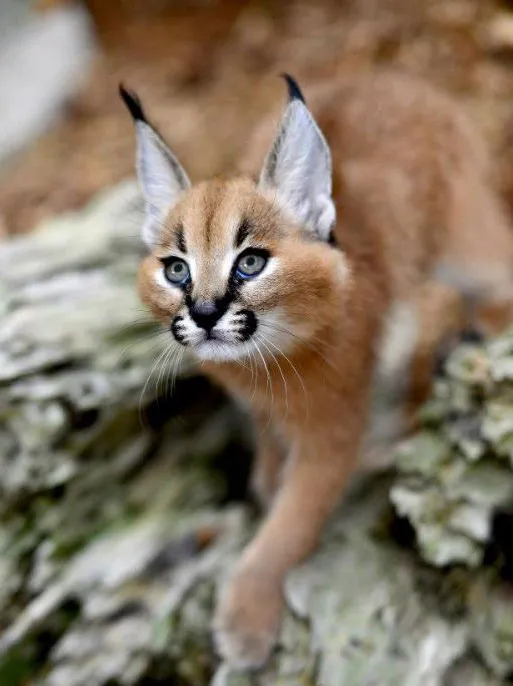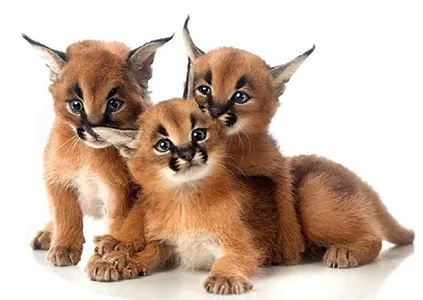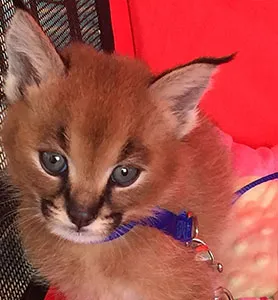The allure of owning an exotic pet like a caracal is undeniable for many animal enthusiasts. With their striking appearance, distinctive ear tufts, and wild grace, caracals captivate attention. If you’ve been searching for “Caracal For Sale,” it’s crucial to approach this decision with extensive knowledge and a deep understanding of the unique commitment involved. Unlike domestic cats, caracals are wild animals with specific needs that require dedicated care, a suitable environment, and adherence to complex legal regulations. This guide from Dog Care Story aims to provide a comprehensive overview, ensuring potential owners are fully prepared for the realities of caracal ownership.
Understanding the Caracal: Habitat and Characteristics
Caracals, often referred to as “desert lynx” due to their characteristic ear tufts, are fascinating medium-sized wild cats native to the dry savannahs, woodlands, and scrubby, arid habitats of Central, Southern, and West Africa, as well as Southwest Asia and the Middle East. Despite the “desert lynx” moniker, they are not true lynx, though their prominent black ear tufts are a shared feature. These magnificent felines are known for their incredible agility and hunting prowess, historically even used in bird hunting in some regions. Their Turkish name, “karakulak,” meaning “black ear,” perfectly encapsulates one of their most distinguishing features.
Caracals are Africa’s largest “small cats,” with males typically weighing up to 40 pounds and females around 35 pounds. They can stand up to 20 inches tall at the shoulder and measure up to 39 inches long, excluding their tails. Their short, dense coat is usually a uniform tawny-brown, which provides excellent camouflage in their natural environments. In the wild, caracals are solitary and primarily nocturnal, making them skilled and elusive hunters. Understanding these inherent traits is the first step in appreciating the complexities of their care in a captive setting.
 A majestic caracal kitten with distinctive black ear tufts
A majestic caracal kitten with distinctive black ear tufts
The Allure of the Caracal: Why They’re Sought After
Many individuals are drawn to caracals as pets because of their striking appearance and the perceived novelty of owning a wild cat. Their sleek musculature, powerful leaps, and independent demeanor contribute to their mystique. However, it’s vital to recognize that these very qualities stem from their wild nature, which demands respect and specialized management. While some caracals can exhibit affectionate behaviors towards their keepers, their fundamental instincts remain. They are not simply larger versions of domestic cats; their behaviors can be more intense, unpredictable, and potentially destructive to a typical home environment.
Legal and Ethical Considerations Before You Buy a Caracal
Before even searching for a “caracal for sale,” thoroughly research the legalities surrounding exotic pet ownership in your specific location. Laws vary drastically by country, state, county, and even city, with some areas completely prohibiting caracals or requiring strict permits. Ignorance of the law is not an excuse, and illegal ownership can lead to severe penalties, including fines, confiscation of the animal, and even imprisonment.
Navigating State Laws and USDA Licensing
In the United States, for example, many states require special permits or outright ban caracals. If you are considering purchasing a caracal, ensure any facility you deal with is USDA licensed, as this indicates a certain standard of animal welfare and regulatory compliance for breeders and dealers of exotic animals. However, a USDA license for a seller does not supersede your local exotic animal ownership laws. It’s also imperative to understand that facilities that breed caracals often require extensive background checks and ensure that potential buyers have appropriate enclosures and a clear understanding of the animal’s needs.
The Commitment of Exotic Pet Ownership
Owning a caracal is a lifelong commitment, as these animals can live for 17-19 years in captivity, significantly longer than their wild counterparts. This commitment extends beyond daily feeding and includes specialized veterinary care, which can be expensive and difficult to find, as not all veterinarians are equipped to treat exotic felines. Furthermore, the temperament of a caracal, while often described as having a “cat-like attitude,” is inherently wilder. They might initiate affection but can also become rambunctious, causing accidental damage to furniture and household items. Their vocalizations, including hissing, can be misinterpreted by novice owners, leading to a lack of understanding regarding their emotional state.
 A caracal cat, known for its powerful build and sharp senses
A caracal cat, known for its powerful build and sharp senses
Caring for Your Caracal: Diet, Habitat, and Socialization
The well-being of a captive caracal depends heavily on replicating aspects of their natural environment and diet. They are obligate carnivores, meaning their diet must consist almost entirely of meat. In captivity, a caracal typically requires 2-3 pounds of specialized raw meat daily, often including whole prey items to ensure proper nutrition, such as bones, organs, and muscle tissue. This is not a diet that can be met with standard commercial pet food. Consulting with an exotic animal nutritionist or a veterinarian specializing in exotic felines is crucial to formulate a balanced and appropriate diet.
Nutritional Needs of a Carnivore
In their natural habitat, caracals hunt a variety of mammals, including rodents, hares, and even small antelopes. They are known for their confidence in taking down larger prey. Therefore, their captive diet must reflect this predatory nature, providing all essential nutrients to prevent deficiencies. Improper nutrition can lead to serious health issues, underscoring the need for expert guidance in their feeding regimen.
Creating a Suitable Environment
A domestic home is rarely suitable for a caracal. They require large, secure outdoor enclosures that allow for their natural behaviors like climbing, running, and solitary hunting simulation. These enclosures must be escape-proof, offer protection from the elements, and include enrichment items such as platforms, scratching posts, and toys to keep them mentally and physically stimulated. Confinement in an inadequate space can lead to stress, boredom, and behavioral problems.
 A young caracal kitten with striking blue eyes
A young caracal kitten with striking blue eyes
Understanding Caracal Behavior and Communication
Caracals are solitary animals, and while they may bond with their primary keeper, they are not inherently social in the way a domestic cat or dog might be. Their communication can be subtle and easily misunderstood. For instance, a hiss from a caracal might indicate excitement or anxiety, not necessarily aggression. A lack of understanding of their body language and vocalizations can lead to frustration for both the animal and the owner. This complexity often leads new exotic pet owners to consider other species like Servals, which, while also exotic, are often considered slightly more adaptable to human interaction.
Breeding Caracals: A Specialized Endeavor
Breeding caracals in captivity is a specialized task typically undertaken by experienced facilities, often with conservation goals in mind. These animals are solitary outside of mating season, and their gestation period is relatively short, lasting only 78-81 days, usually resulting in a litter of 1-4 kittens. Most commonly, only two offspring survive to maturity. The kittens will remain with their mother for up to a year until they reach sexual maturity, learning essential survival skills. Ethical breeding practices focus on the welfare of the animals and ensuring suitable homes for their offspring, often collaborating with zoos and reputable sanctuaries.
Where to Find Caracals For Sale Responsibly
If, after extensive research and consideration, you decide that caracal ownership is right for you and you can meet all legal and care requirements, it’s crucial to find a reputable source. Avoid impulse purchases from unverified online listings. Instead, seek out USDA-licensed facilities, established exotic animal breeders with a proven track record, or consider opportunities to adopt from a wildlife sanctuary if available. These sources prioritize the animal’s welfare, provide comprehensive health records, and will ensure you are adequately prepared. Be wary of any seller who pressures you, offers to ship animals across borders without proper documentation, or cannot provide clear information on the animal’s background and health. Remember to always verify the legality of caracal ownership in your area before making any inquiries.
 A charming caracal kitten playfully exploring its surroundings
A charming caracal kitten playfully exploring its surroundings
Conclusion
The thought of finding a “caracal for sale” can be exciting, but responsible pet ownership, especially for exotic animals, demands profound dedication, resources, and a thorough understanding of the animal’s intrinsic needs. Caracals are magnificent creatures, but they are wild at heart, requiring specialized diets, expansive enclosures, expert veterinary care, and an owner who respects their natural instincts. Before bringing one of these incredible felines into your life, ensure you are fully prepared for the lifelong commitment, the legal complexities, and the unique challenges they present. Consult with exotic animal experts, veterinarians, and local wildlife authorities to make an informed and ethical decision that prioritizes the welfare of these stunning animals. For more insights into responsible pet care, explore other articles on our Dog Care Story website.
